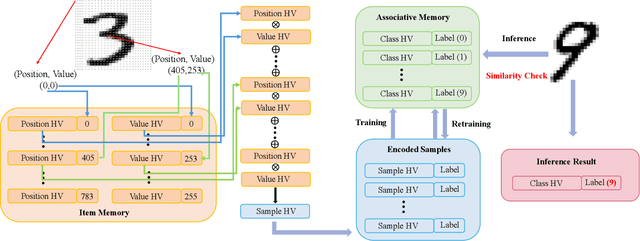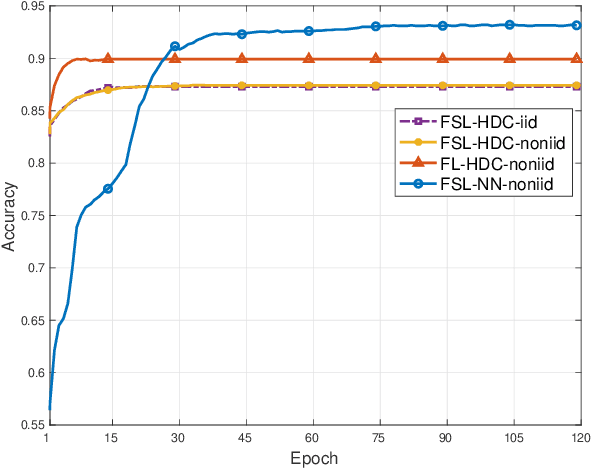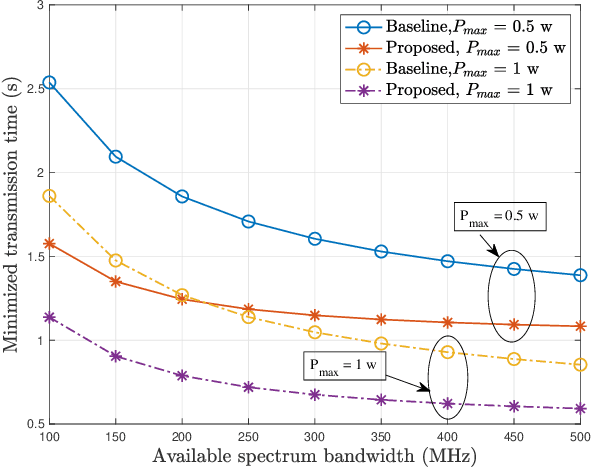Yahao Ding
Hyperdimensional Computing Empowered Federated Foundation Model over Wireless Networks for Metaverse
Aug 26, 2024



Abstract:The Metaverse, a burgeoning collective virtual space merging augmented reality and persistent virtual worlds, necessitates advanced artificial intelligence (AI) and communication technologies to support immersive and interactive experiences. Federated learning (FL) has emerged as a promising technique for collaboratively training AI models while preserving data privacy. However, FL faces challenges such as high communication overhead and substantial computational demands, particularly for neural network (NN) models. To address these issues, we propose an integrated federated split learning and hyperdimensional computing (FSL-HDC) framework for emerging foundation models. This novel approach reduces communication costs, computation load, and privacy risks, making it particularly suitable for resource-constrained edge devices in the Metaverse, ensuring real-time responsive interactions. Additionally, we introduce an optimization algorithm that concurrently optimizes transmission power and bandwidth to minimize the maximum transmission time among all users to the server. The simulation results based on the MNIST dataset indicate that FSL-HDC achieves an accuracy rate of approximately 87.5%, which is slightly lower than that of FL-HDC. However, FSL-HDC exhibits a significantly faster convergence speed, approximately 3.733x that of FSL-NN, and demonstrates robustness to non-IID data distributions. Moreover, our proposed optimization algorithm can reduce the maximum transmission time by up to 64% compared with the baseline.
Distributed Machine Learning for UAV Swarms: Computing, Sensing, and Semantics
Jan 03, 2023Abstract:Unmanned aerial vehicle (UAV) swarms are considered as a promising technique for next-generation communication networks due to their flexibility, mobility, low cost, and the ability to collaboratively and autonomously provide services. Distributed learning (DL) enables UAV swarms to intelligently provide communication services, multi-directional remote surveillance, and target tracking. In this survey, we first introduce several popular DL algorithms such as federated learning (FL), multi-agent Reinforcement Learning (MARL), distributed inference, and split learning, and present a comprehensive overview of their applications for UAV swarms, such as trajectory design, power control, wireless resource allocation, user assignment, perception, and satellite communications. Then, we present several state-of-the-art applications of UAV swarms in wireless communication systems, such us reconfigurable intelligent surface (RIS), virtual reality (VR), semantic communications, and discuss the problems and challenges that DL-enabled UAV swarms can solve in these applications. Finally, we describe open problems of using DL in UAV swarms and future research directions of DL enabled UAV swarms. In summary, this survey provides a comprehensive survey of various DL applications for UAV swarms in extensive scenarios.
 Add to Chrome
Add to Chrome Add to Firefox
Add to Firefox Add to Edge
Add to Edge